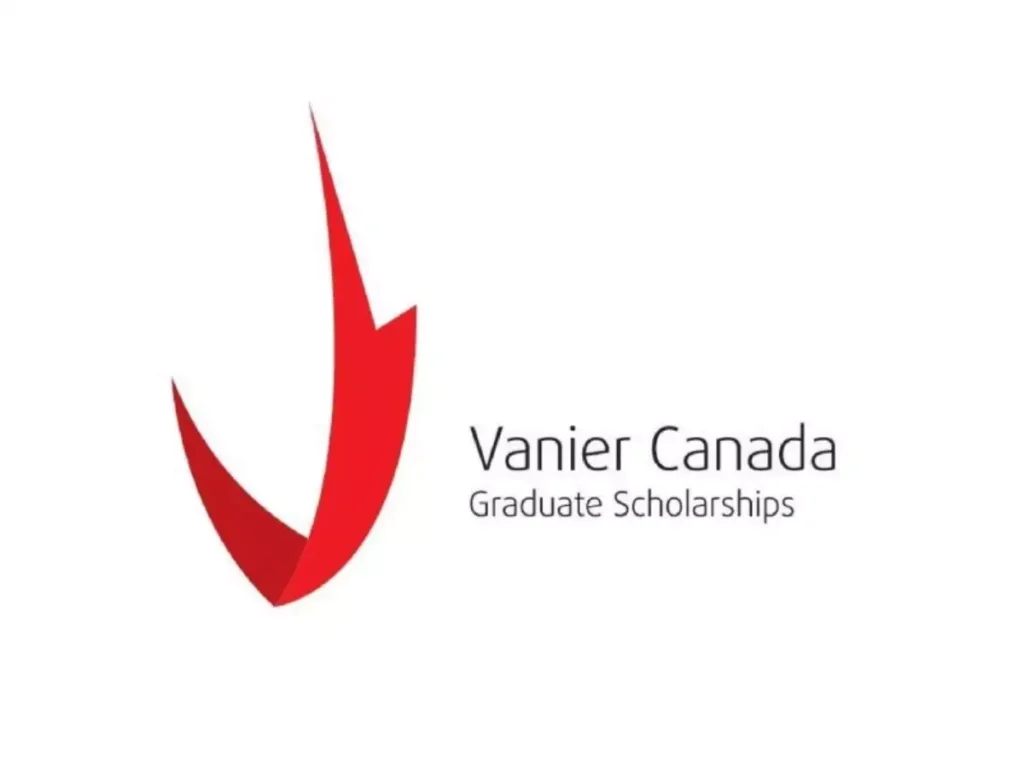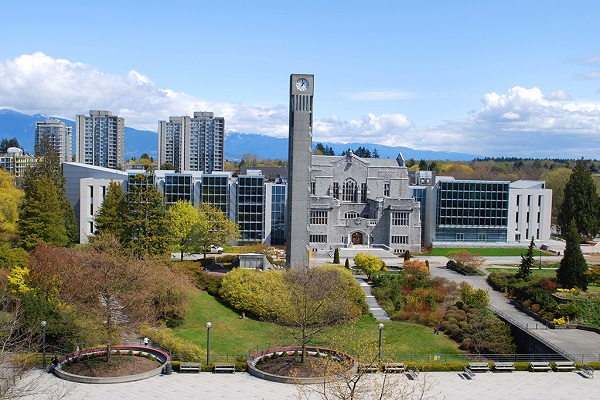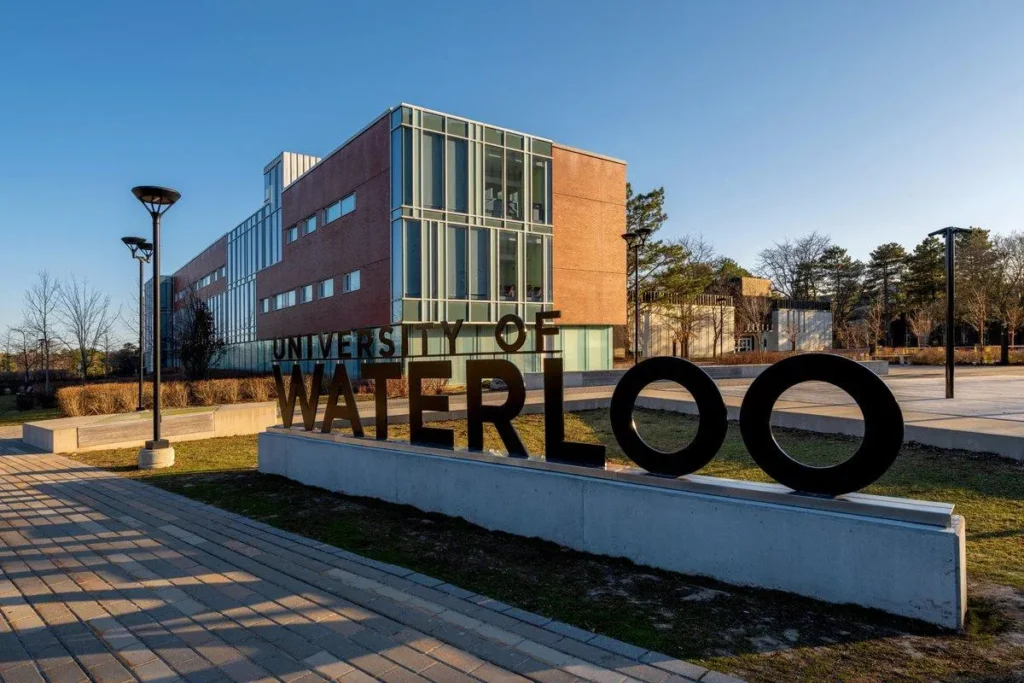
Imagine stepping off a plane, the cool Canadian air brushing against your skin, and a world filled with possibilities unfurling before you. For many skilled workers, this scene becomes a reality through Canada’s Federal Skilled Worker Program (FSWP). This program represents not just a visa opportunity, but a chance to build a life in a country that values diversity and the dreams of individuals from around the globe. Navigating this journey requires understanding the intricacies of the Canadian immigration process, and the Canada Federal Skilled Worker Program Guide serves as a compass for those eager to make their mark. In this article, we will walk you through the essential aspects of the Skilled Worker Visa Canada, ensuring you are well-prepared for the rewarding adventure that lies ahead.
Key Takeaways
- The Federal Skilled Worker Program is a key pathway for skilled workers immigrating to Canada.
- Understanding the Canadian immigration process is crucial for success.
- The program focuses on assessing skills, work experience, and adaptability.
- The Canada Federal Skilled Worker Program Guide provides valuable insights.
- Securing a Skilled Worker Visa Canada opens a world of opportunities.
- Preparation is essential to navigating the FSWP effectively.
Introduction to Canada’s Immigration Landscape
Canada stands as a prominent destination for immigrants, regarded for its welcoming approach and diverse opportunities. Immigration plays a fundamental role in shaping the economy and enriching the cultural fabric of the nation. A steady influx of skilled workers addresses critical labor shortages across various sectors, enhancing productivity and fostering economic growth. An understanding of the Canada immigration requirements is essential for those seeking to navigate the immigration process successfully.
Importance of Immigration to Canada
Immigration serves as a backbone of Canada’s economy, contributing to labor force growth and facilitating innovation. Skilled immigrants bring unique talents and perspectives, which help businesses thrive and communities flourish. The government’s commitment to attracting individuals with essential skills reflects the importance placed on immigration as a driver of overall national development.
Overview of Immigration Options
Canada offers numerous immigration options for skilled workers in Canada, including pathways such as the Express Entry program, Provincial Nominee Programs, family sponsorships, and student visas. These avenues enable individuals and families to find their place in a country that values diversity and inclusivity. Each option comes with its distinct eligibility criteria and processes, providing multiple avenues for those wishing to settle in Canada. For a more comprehensive exploration of the available immigration pathways, consider reviewing the detailed information on immigration options for skilled workers in.
What is the Federal Skilled Worker Program?
The Federal Skilled Worker Program serves as a pathway for skilled immigrants seeking to establish their lives in Canada. This program focuses on selecting individuals based on their skills, experience, and ability to integrate into Canadian society. The Overview of Canada’s Federal Skilled Worker Program and Immigration Process highlights how candidates are evaluated through age, education, work experience, and language proficiency, ensuring an effective selection process.
Key Features of the Program
The program boasts several significant features:
- Skill-Based Selection: Candidates are chosen based on specific skills and qualifications that align with Canada’s labor market needs.
- Express Entry System: The program utilizes the Express Entry platform for managing applications, making the immigration process more streamlined.
- Comprehensive Criteria: Applicants must meet various conditions, which include educational qualifications and relevant work experience.
Who Qualifies for the Program?
Understanding Federal Skilled Worker Program eligibility is essential for potential applicants. The qualifying criteria include:
- Age: Younger applicants may receive more points, allowing them an advantage in the selection process.
- Education: A recognized degree or diploma is required to demonstrate academic qualifications.
- Work Experience: Relevant work history in skilled occupations is a must for candidates.
- Language Proficiency: Proficiency in English or French needs to be demonstrated through standardized testing.
Eligibility Criteria
Understanding the eligibility criteria for the Federal Skilled Worker Program is crucial for those interested in Canada’s immigration pathways. This program sets specific standards that applicants must meet to ensure they possess the necessary skills and qualifications. The three primary components include education requirements, work experience, and language proficiency.
Education Requirements
To qualify under the Federal Skilled Worker Program, candidates must demonstrate a minimum level of *post-secondary education*. This typically involves having a diploma, degree, or certificate from a recognized institution. Candidates with foreign credentials may need to undergo an educational credential assessment (ECA) to confirm that their education aligns with Canadian standards. Meeting these Canada immigration requirements is essential for determining Federal Skilled Worker Program eligibility.
Work Experience Requirements
Applicants must showcase relevant work experience in skilled occupations, which is central to the Federal Skilled Worker Program eligibility. Generally, this entails having at least one year of continuous full-time (or equivalent part-time) work experience in a specified NAFTA (National Occupational Classification) skill level 0, A, or B role. The work experience should align closely with the job offered in Canada, enhancing the applicant’s qualifications.
Language Proficiency
Language proficiency in either English or French plays a pivotal role in the Federal Skilled Worker Program. Candidates are required to provide standardized test scores to validate their language abilities. Tests such as the IELTS for English or the TEF for French are commonly accepted. Achieving the minimum language thresholds is a vital aspect of the Canada immigration requirements, significantly impacting an applicant’s chances for program acceptance.
The Application Process
Navigating the Canadian immigration process for a Skilled worker visa Canada involves several crucial steps. Proper understanding and preparation can streamline the journey, increasing the likelihood of a successful application. The process begins with creating an Express Entry profile and ultimately leads to receiving an Invitation to Apply (ITA). Below are detailed steps and documentation requirements to assist prospective applicants in this endeavor.
Step-by-Step Application Guide
- Gather Necessary Information: Compile details about education, work experience, language proficiency, and other personal information.
- Create an Express Entry Profile: Register online and provide comprehensive information regarding skills and qualifications.
- Receive a Comprehensive Ranking System (CRS) score: Your profile will be evaluated, resulting in a score that ranks your eligibility.
- Wait for an Invitation to Apply (ITA): Those with the highest scores will receive invitations during periodic draws.
- Submit the Application: Complete your application and submit it along with required documents within the specified timeframe.
Necessary Documentation
Your application for a Skilled worker visa Canada requires various documents to validate your qualifications. Essential documentation includes:
| Document Type | Description |
|---|---|
| Proof of Education | Transcripts and degrees must be included, especially if obtained outside Canada. |
| Work Experience Letters | Official documents from employers detailing job titles, responsibilities, and duration of employment. |
| Language Test Results | Results should be from an approved testing agency, demonstrating proficiency in English or French. |
| Medical Exam Results | Health examinations must be conducted by an approved physician. |
| Proof of Funds | Documentation proving sufficient funds for settlement unless a job offer exists. |
Following the outlined steps and ensuring all documents are prepared will facilitate a smoother experience in the Canadian immigration process. For a more comprehensive understanding, visit the official guidelines on the Federal Skilled Worker.
Express Entry System
The Express Entry system is a vital component of the immigration landscape in Canada. It serves as a robust management system for processing applications under the Federal Skilled Worker Program (FSWP). The system focuses on selecting qualified candidates based on their Comprehensive Ranking System (CRS) scores. This scoring mechanism ranks candidates based on various factors, such as work experience, education, and language proficiency, which are assessed through the Canada immigration points system. By effectively evaluating and ranking applicants, the Express Entry system streamlines the immigration process, ensuring that skilled workers can fill essential roles in the Canadian labor market.
The Role of Express Entry in Immigration
The Express Entry system plays a crucial role in facilitating the immigration process for skilled workers. It allows for a faster and more efficient approach to managing immigration applications. By utilizing the Canada immigration points system, the Express Entry system identifies the most qualified candidates for immigration to Canada. The selection rounds, known as Express Entry draws, are held periodically where applicants with the highest CRS scores receive Invitations to Apply (ITA) for permanent residency. This system not only benefits the candidates by expediting their applications but also supports Canada’s economic growth by attracting talent needed in various industries.
How to Create an Express Entry Profile
Creating an Express Entry profile is an essential step for those looking to immigrate to Canada through the FSWP. The process involves several key steps:
- Assess eligibility: Understanding the requirements of the Federal Skilled Worker Program is crucial. Ensure you meet the education, work experience, and language proficiency criteria.
- Gather necessary documents: Prepare essential documents, including proof of work experience, educational credentials, and language test results.
- Create an online profile: Visit the official immigration website to create an Express Entry profile. Fill in your information accurately to ensure your CRS score reflects your qualifications.
- Submit the profile: After completing the profile, submit it for consideration. Candidates will be entered into the Express Entry pool where their scores will be ranked against others.
- Monitor updates: Regularly check for news on Express Entry draws and stay updated on your CRS score. Adjustments may be necessary based on changes in immigration policies or personal qualifications.
Comprehensive Ranking System (CRS)
The Comprehensive Ranking System (CRS) is a pivotal part of Canada’s Federal Skilled Worker Program and the Express Entry framework. This system assigns points based on various factors that contribute to a candidate’s likelihood of successfully integrating into the Canadian labor market. Understanding how the Canada immigration points system operates can give you a clearer advantage in navigating the immigration process.
Understanding the CRS Points
The CRS awards points based on several key criteria, including:
- Age
- Education level
- Work experience
- Language proficiency in English and/or French
- Valid job offers or provincial nominations
Each factor has a set number of points, and candidates with higher scores stand a better chance of receiving an Invitation to Apply (ITA) for permanent residency. A detailed breakdown is shown in the table below:
| Factor | Max Points | Details |
|---|---|---|
| Age | 110 | Points awarded based on age range, with younger candidates receiving higher scores. |
| Education | 150 | Points based on highest level of education achieved. |
| Work Experience | 80 | Points related to the number of years of skilled work experience. |
| Language Proficiency | 160 | Points awarded for language testing scores in English and/or French. |
| Job Offers/Nomination | 600 | Additional points for job offers or provincial nominations significantly boost total CRS score. |
Improving Your CRS Score
Improving Your CRS Score is essential for increasing chances of receiving an ITA. Here are effective strategies to enhance your score:
- Enhance language skills: Achieving a higher score on language proficiency tests can lead to substantial point increases.
- Gather additional work experience: Gaining experience in skilled occupations can add to your total work experience points.
- Obtain a provincial nomination: Securing a nomination from a province can provide a significant point boost.
- Further education: Pursuing additional degrees or certifications may also enhance total education points.
Taking these steps can position candidates favorably within the Canada immigration points system, ensuring a stronger application overall.
Provincial Nominee Programs (PNPs)
Provincial Nominee Programs serve as vital pathways for immigrants looking to settle in Canada. Each province has its own unique labor market needs and can select immigrants who fulfill those requirements. This tailored approach enhances the range of immigration options for skilled workers in Canada, ultimately facilitating labor market integration.
Interaction Between PNPs and Federal Programs
Provincial Nominee Programs interact closely with federal immigration programs, including the Federal Skilled Worker Program. When a candidate receives a provincial nomination, this endorsement significantly boosts their application in the immigration process. A provincial nomination can provide additional points in the Comprehensive Ranking System (CRS), enhancing the candidate’s overall score and competitiveness in the Express Entry pool.
How PNPs Affect Your Immigration Options
Receiving a nomination through a PNP can broaden immigration options for skilled workers in Canada. Many provinces offer specific streams for various occupations, attracting individuals whose skills align with local demands. This not only helps meet labor shortages but also presents candidates with a more favorable route to obtaining permanent residency. Understanding the nuances of PNPs can empower prospective immigrants to make informed choices and potentially expedite their immigration journey.
Tips for a Successful Application
Applying for the Federal Skilled Worker Program (FSWP) can be complex. To enhance your chances of success, understanding common pitfalls and implementing best practices for documentation is crucial. Many applicants overlook essential details that can lead to delays or denials. By adhering to the Canada immigration requirements, you can streamline the process effectively.
Common Mistakes to Avoid
Many applicants make mistakes that hinder their chances of receiving an Invitation to Apply (ITA). Here are some common errors:
- Submitting incomplete documentation, which can delay the processing time.
- Providing misinformation in the application, leading to potential disqualification.
- Neglecting language proficiency tests, which are essential for meeting Canada immigration requirements.
- Failing to stay informed about updates in immigration policies and requirements.
Best Practices for Documentation
Efficiently organizing and submitting necessary documentation is key for a successful application. Here are some best practices for documentation:
- Ensure all documents are accurate, complete, and clearly labeled.
- Keep digital and physical copies of all submitted documents.
- Use a checklist to verify that all Canada immigration requirements are met before submission.
- Communicate clearly and promptly with immigration officials if any questions arise during the process.
For additional insights on ensuring a strong application, you can read more about Best Practices for Documentation.
Life in Canada for Skilled Workers
Transitioning to life in Canada after obtaining a skilled worker visa Canada opens the door to a range of opportunities and experiences. For successful applicants of the Federal Skilled Worker Program, the journey involves not just finding employment but also immersing in a vibrant and multicultural society.
Employment Opportunities
The Canadian job market remains robust, particularly in sectors such as technology, healthcare, and engineering. Employers are actively seeking skilled professionals, which creates an advantageous environment for newcomers. Networking plays a crucial role in discovering job openings and making valuable connections.
- Technology: Growing demand for skilled workers in IT and software development.
- Healthcare: High need for nurses, doctors, and allied health professionals.
- Engineering: Opportunities in civil, mechanical, and electrical engineering fields.
Cultural Adaptation
Adjusting to life in Canada goes beyond employment. Community support and resources can facilitate a smoother transition. Numerous organizations provide programs designed to assist newcomers in settling and adapting. Engaging with local communities fosters connections and enhances feelings of belonging.
- Language classes: Essential for improving proficiency in English or French.
- Cultural orientation: Workshops outlining Canadian customs and societal norms.
- Social networks: Arriving and joining local clubs or groups to meet new people.
Conclusion
The Federal Skilled Worker Program serves as a vital pathway for individuals seeking to establish their careers in Canada. This overview of Canada’s Federal Skilled Worker Program and Immigration Process highlights the importance of being thoroughly prepared. Key insights emphasize understanding the eligibility criteria, which plays a crucial role in ensuring a smooth application and transition experience.
Key Takeaways on the Federal Skilled Worker Program
As demonstrated in program evaluations, a significant percentage of Federal Skilled Workers find employment or become self-employed shortly after their arrival. The program’s design, which fosters a diverse range of participants from various source countries, has shown success in aligning with Canada’s immigration objectives. For those considering this path, detailed understanding of the application process and eligibility criteria is indispensable.
Resources for Further Information
To assist throughout your immigration journey, numerous resources for further information are available. Government websites, alongside immigration consultants and support groups, can provide valuable insights and guidance, empowering prospective immigrants to navigate the complexities of the Federal Skilled Worker Program with confidence.
FAQ
What is the Federal Skilled Worker Program?
The Federal Skilled Worker Program (FSWP) is a key immigration pathway for qualified individuals seeking to relocate to Canada. It assesses candidates based on their skills, work experience, and ability to adapt to Canadian society.
What are the eligibility requirements for the FSWP?
Eligibility for the FSWP includes having a minimum level of post-secondary education, relevant work experience in a skilled occupation, and proficiency in English or French, as proven through standardized testing.
How does the Express Entry system work?
The Express Entry system manages applications for FSWP candidates. It uses the Comprehensive Ranking System (CRS) to evaluate and rank candidates based on various criteria, including age, education, work experience, and language skills.
What documents do I need for my FSWP application?
Essential documents include proof of education, work experience letters, language test results, and medical exams. It’s crucial to provide complete and accurate documentation to avoid application delays or rejections.
How is the Comprehensive Ranking System (CRS) calculated?
The CRS assigns points based on factors such as age, education, work experience, and proficiency in English or French. Each of these factors contributes to the total score, which determines an applicant’s rank in the Express Entry pool.
What are Provincial Nominee Programs (PNPs)?
Provincial Nominee Programs (PNPs) allow Canadian provinces to nominate individuals for immigration to meet their specific labor market needs, which can enhance an applicant’s chances of receiving an Invitation to Apply (ITA) through the Express Entry system.
What strategies can I use to improve my CRS score?
To improve your CRS score, you can enhance your language test results, gain more relevant work experience, secure a job offer, or obtain a provincial nomination, which can significantly increase your competitiveness in the immigration process.
What are common mistakes to avoid when applying for the FSWP?
Common mistakes include submitting incomplete or inaccurate documentation, not meeting the required deadlines, and failing to demonstrate the necessary work experience or language proficiency, all of which can lead to application delays or rejections.
What is life like in Canada for skilled workers?
Life in Canada for skilled workers can be fulfilling as they have access to numerous employment opportunities across various sectors. Many newcomers also benefit from community support resources to help them adapt culturally and socially.





